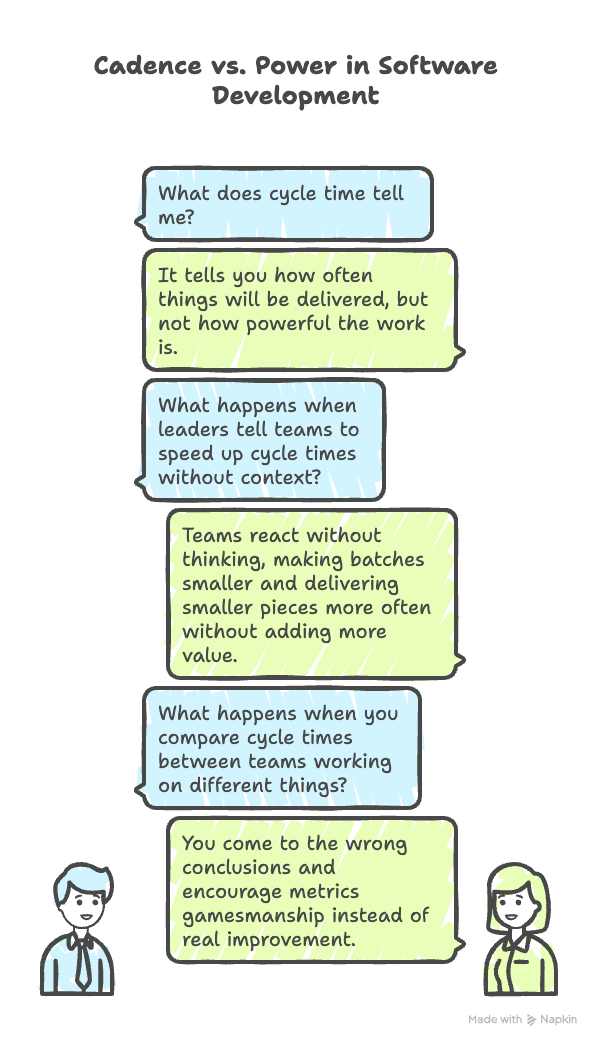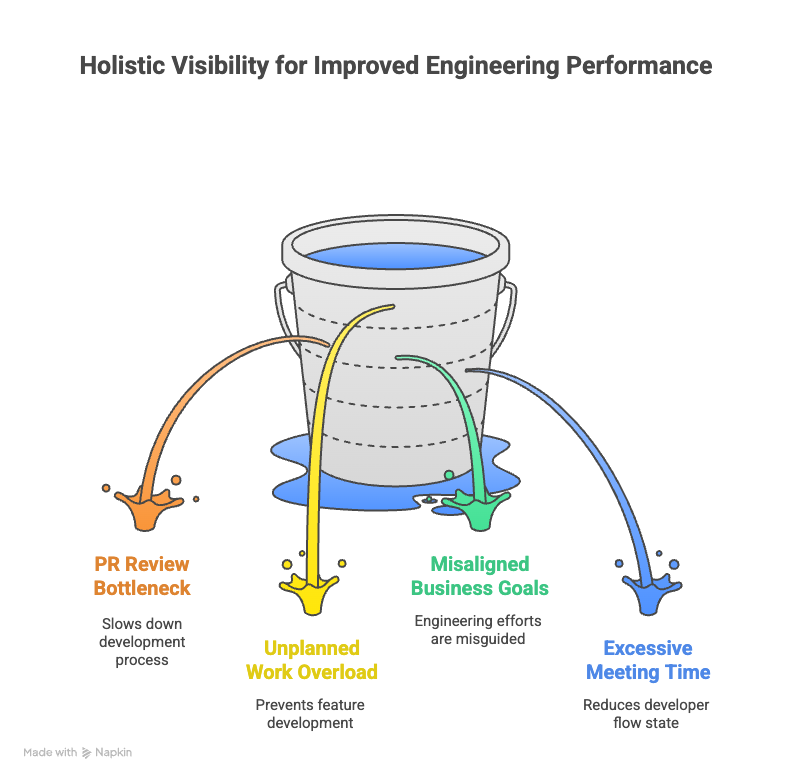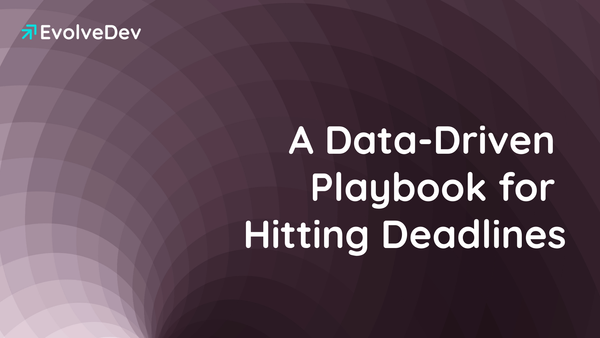The Cycle Time Trap: Are You Measuring What Truly Matters?

I've seen a lot of metrics come and go in more than a decade of my experience. But one has been very stubborn: Cycle Time. People often use it as a guide for how well engineers do their jobs. It seems like the logic is simple: we must be doing better if we ship faster.
But here's a hard-earned truth: using cycle time as your main measure of performance is a trap. It can make it seem like you're making progress while hiding bigger problems and, in many cases, working against your goal of building a high-performing team.
The Problem of Diminishing Returns
One of the biggest problems with cycle time is that it only works well at the extremes.
Think about a team that takes three months to finish a cycle. Yes, in that case, lowering that number is a very important goal that will have a big effect. You have a problem that is clear and systemic.
Now, think about a team that has a cycle time of four days, which is more common. Is the next step to get it down to three? Or two? Even though constantly lowering cycle time may seem like an improvement, it often leads to a pattern of diminishing returns. Are you really giving customers more value if your team is only getting a lower cycle time by breaking work into smaller, less important pieces?
Giving two units of value twice a week isn't always better than giving four units once a week. If breaking up work unnecessarily adds more overhead, context-switching, and integration complexity, you're actually making your developers' lives harder. It's not just about speed; it's also about momentum that makes things work well.
Cadence vs. Power: Why Cycle Time Tells Only Half the Story
Let's use an analogy. When you ride a bike, your overall speed depends on two things: your cadence (how fast you pedal) and your power (how much force you put into each pedal stroke). You won't win the race if you pedal really fast in a low gear.
Your cadence in software development is the cycle time. It tells you how often things will be delivered. It doesn't tell you how powerful the work being done in each cycle is, like how big, complicated, or valuable it is.
When leaders tell teams to speed up cycle times without this context, teams react without thinking. By making their batches smaller, they "pedal faster." They're not giving you more value; they're just giving you smaller pieces more often. When you compare cycle times between teams that are working on different things, like one team working on complex platform infrastructure and another team working on small UI changes, you come to the wrong conclusions and encourage a culture of metrics gamesmanship instead of real improvement.

From a Single Metric to Holistic Visibility
If cycle time isn't the answer, what is?
Finding another single silver-bullet metric isn't the answer. The answer is to stop looking at your engineering organization in a one-dimensional way and start seeing it as a whole. We shouldn't be asking, "How fast are we going?" Instead, we should be asking, "Where is the friction?"
This is the idea that EvolveDev.io is based on. To really improve performance, leaders need to know what is causing developers to work more slowly.
Are PRs stuck in review for days?
Is the team so busy with bug fixes and other unplanned work that they can't work on new features? (Our Investment Dashboard makes this clear for you.)
Are the engineering efforts not in line with the business goals?
Are developers spending more time in meetings than in a flow state?

EvolveDev automatically shows you these insights by working with the tools your team already uses, like GitHub, Jira, Bitbucket, and Slack. We give you the whole picture, not just one number, so you can see why your team is doing well.
Cycle time can help a team figure out how to make its own process better. But when used as a top-down, organization-wide performance mandate, it doesn't work.
It's not enough to just be faster; you have to be better. If you want to create a happy, efficient, and long-lasting engineering culture, you need to do more than just improve a number on a dashboard. You need to get rid of problems. You need to fix what you can finally see.





